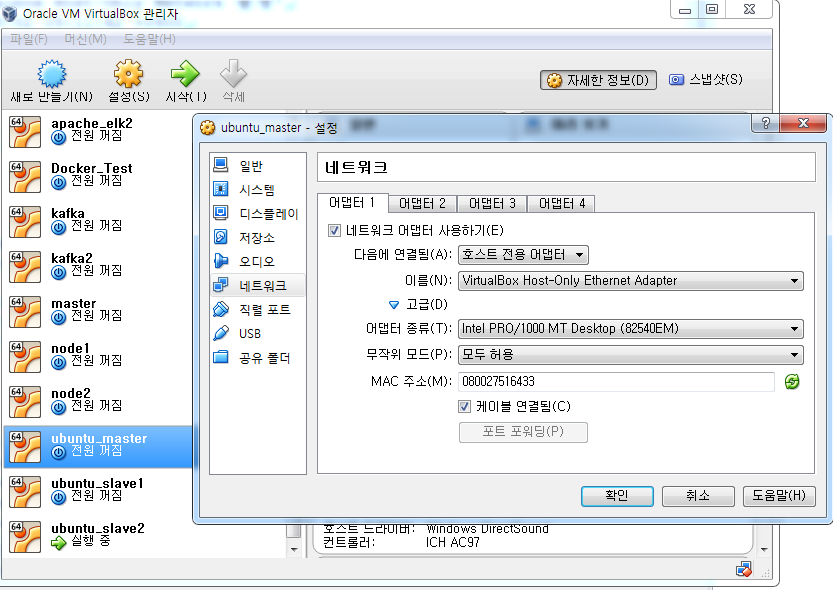


The GUI offers mechanisms, too, if the command-line isn't your friend, but the docs help make it understandable (or it should), and don't really address the GUI. The VirtualBox documentation (and links therein) outlines the host-only interface and related DHCP server to change the addresses. Make sure each host-only network uses a different "x" value there are 254 choices after removing the one the host is on as all values from 0 to 255 are valid in that octet. They can't be the same because then hosts that need to access different networks won't know which to reach, of course.įor example, since we're using the example of the 192.168.1.0/24 network used by default by so many SOHO NAT routers, this means we could choose to use any of the other .0/24 networks for the host-only networks. That is, each host-only network needs to be different, and not all the same default 192.168.56.0/24 network. Make sure your host-only networks are unique (at least any that are participating in the scheme). It's likely that those same NAT routers will require a /24 network, but since you can use any 10.x.y.0/24 network (for simple subnetting always use /24, which is your friendly netmask of 255.255.255.0), that makes 64K of networks available! Host-only Network Configuration We'll reserve the 192.168.56.0/24 network for "default" host only use, and plan not to route to that one (which is only trouble for the machine assigned 192.168.1.56.įor bigger flexibility, change the NAT to the 10.0.0.0/8 network. That way the machine with the host address of 192.168.1.100 will have the host-only network of 192.168.100.0/24 it'll make it easy to define and find host-only networks later. Then we'll use the helpful plan of changing the next-to-last octet for each host-only network to the last octet of the host machine. For the sake of easing the discussion, let's let the host network be the SOHO NAT default of 192.168.1.0/24 and that each host will have only one host-only network. Here are the four bits you need to do, from the inside out:įirst, some assumptions. It does require some administrative access, so it might be hard to do for that reason, too. What makes it possible is that the host is also participating in the host-only network (the only virtual network scheme where the host directly participates), as long as participating hosts can do the routing necessary.

You can do host-only networking and connect guests to other guests on host-only networks on multiple hosts, or multiple host-only networks on the same host. This assumes a little bit of network configuration knowledge, and some familiarity with VirtualBox (and at least a couple of hosts and guests.). Much of this text is the same, but some of the details have been made more specific to a generic case, and less about the specific case outlined in the forum question. I answered the question on the link above, but thought to put some more detail in this discussion. The longer and better answer is "yes, they can!" The general and short answer is "no, they can't." Then, looking for something else, I stumbled upon a related question regarding VirtualBox Host-only networks, and allowing different host-only networks to see each other.

A few days ago I wrote a bit about VirtualBox 4.3 NAT Networks.


 0 kommentar(er)
0 kommentar(er)
